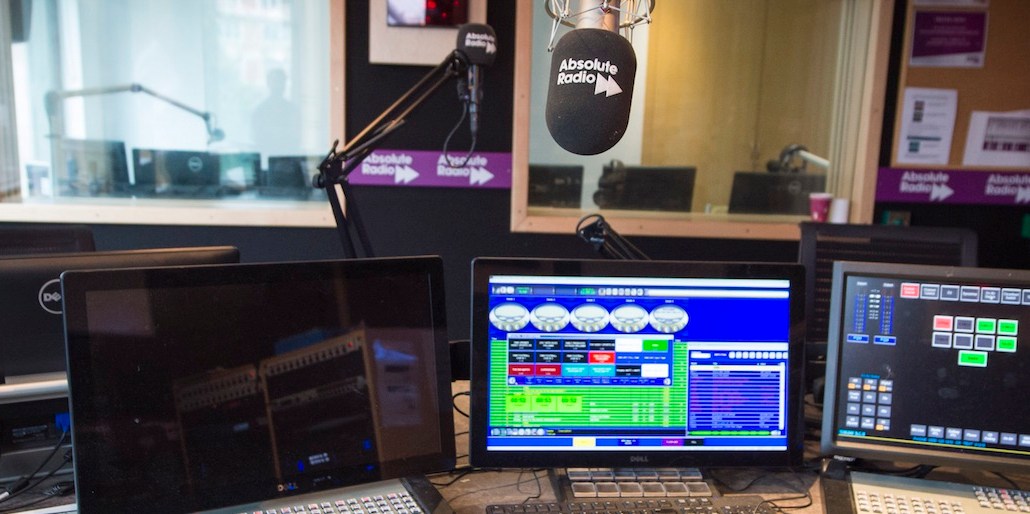UK digital audio landscape: ‘Audio is the new video’

U.K. publishers are all ears when it comes to audio. News Corp completed the acquisition of Wireless Group in September for £220 million ($273 million), Monocle made early bets in this space, launching a 24-hour digital radio station in 2011, and more recently Bloomberg’s digital radio launched in London in October.
“We’ve found audio is the new video,” said Ed Keohane, director, audio at Bauer Media. “With audio you have 100 percent listenability; it’s guaranteed to go to the intended person.”
According to radio-audience-measuring body Radio Joint Audience Research, over half of digital listening in the U.K. happens on Bauer’s brands, which include national radio station Absolute, hip hop radio station Kiss and rock radio station Kerrang! Because the media company has logged in users, it can target them with relevant ads.
While Bauer wouldn’t disclose the amount of revenue that comes from digital audio, Keohane said it was healthy and growing, and as proof of its investment in the medium, it has recently promoted Nadia Holmes to a newly made role of head of digital audio.
Numbers from RAJAR’s report in August found that in total 21.7 million people in the U.K. listen to digital audio (streaming services like Spotify, digital radio and podcasts), constituting nearly 40 percent of the population. It’s seeing double-digit growth every six months. And it’s more popular among younger listeners: People spend 9.7 hours a week on average listening to digital audio, and among 15- to 24-year-olds, this increases to 13.7 hours.
Homegrown podcast successes include The Football Ramble, which has monthly download figures of a respectable 1.7 million, and the comedy series “My Dad Wrote a Porno,” which had 3 million listeners tune in to the first series to hear Jamie Morton read out extracts from his 60-year-old father’s erotic fiction.
“Audio today is attractive to young demographics — 25- to 35-year-olds — often males, who are urban dwellers and are time-poor,” said Douglas McCabe, CEO of Ender Analysis. “Consumers are filling what used to be dead time. The strategies of News UK, Bloomberg, Bauer, even Monocle all reflect these trends.”
On the one hand, the embrace of audio reflects the publisher’s drive to help offset dwindling print revenues. In the case of News Corp, it has gone for access to sports rights: The Wireless Group runs sports radio station TalkSport, which has 3.1 million weekly listeners, and has the rights to broadcast live Premier League, Champions League and FA Cup football, a key boon for The Sun’s football-focused audience.
The acquisition has created cross-media opportunities that are starting to bear fruit. TalkSport, The Sun and Dream Team share social media content on Facebook and other platforms.
Bloomberg is focusing on niche topics that it’s known for: insights and analysis of business and financial issues. Having logged-in users will allow for similar targeting capabilities that Bauer enjoys.
The U.K. audio landscaped has lagged behind the U.S., though. “There is a huge range of commercial strategies, each player in the market has a difference solution,” said Keohane. As mobile is the dominant device audio is consumed on, tracking is that much harder. The IAB doesn’t yet measure digital audio ad spend because there aren’t enough submissions for it to be adequately anonymized. Also, part of the problem is not knowing where digital audio sits within agencies, radio, audiovisual or display.
Even so, agencies are excited by the creative opportunities, according to Flossie Draper, senior programs executive at the IAB. “It’s not visual, but this makes it highly emotive; listeners conjure pictures themselves. Emotion is good for campaigns and can drive higher profit margins, according to the IPA Effectiveness studies.”
“Clients are beginning to understand the value,” agreed Emma Moorhead, head of AV planning at MEC. “It’s a different type of listening because it’s with headphones, personal and intimate, so it’s a different type of buy. From an MEC perspective digital audio accounts for 5 percent of ad spend, but the key thing is that it’s growing.”
Interest has also been piqued by opening up audio to programmatic earlier this year, priming it for growth though more available inventory, even though this won’t have the same direct targeting as reaching logged-in listeners. Although programmatic audio is still in its infancy — between 5 and 6 percent of MEC’s airtime spend is done programmatically. “Programmatic in audio arrived before it fully had scale,” said Keohane, “so it’s set up well.”
More in Media

Digiday+ Research: Publishers take their focus off events as revenue dips
The percentage of publishers making money from events hit a low as of the first quarter of this year and, as a result, fewer publishers plan on putting a focus on growing that part of their business.

What platforms, brands and agencies hope to get out of the Possible conference in year 2
Year two of Possible is once again being held in Miami Beach, and it will take place from April 15-17 with 3,000 attendees expected to listen to another 200 or so speakers, including Snap’s Colleen DeCourcy, Uber Ads’ Megan Ramm and UM Worldwide’s Matthew Smith.

AI Briefing: Cloud giants’ AI ambitions create new partnerships — and new competitive concerns
Last week, tech companies like Google, Microsoft and Amazon all announced updates more updates for their cloud and AI efforts








